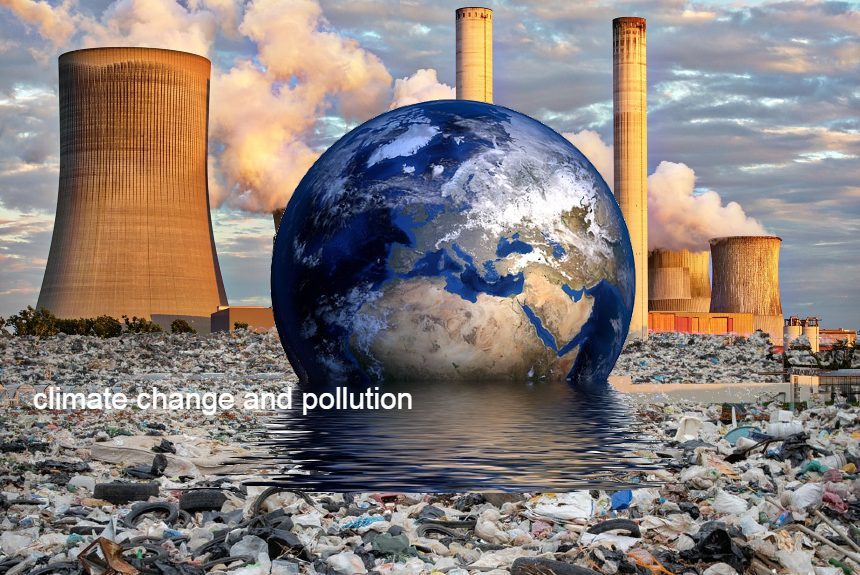A new study published in the journal PLOS ONE shows a strong correlation between toxic and non-toxic pollution and that each one can worsen the other.
Humans have produced significant amounts of both types of pollution. While toxic pollution directly damages human health, non-toxic pollution, like GHG emissions, is responsible for climate change.
The study identifies which countries are most at risk of climate change and toxic pollution and those in the best position to protect themselves against both types of pollution, given the support from the international community.
Climate change results from human GHG emissions into the atmosphere, and it also poses significant risks to human health. Some of its effects on the environment and human health are irreversible.
Scientists fear that tipping points might soon be crossed, causing self-reinforcing feedback in global warming. This will limit humanity’s ability to respond to climate crises collectively.
According to the study, both toxic and non-toxic pollutions are not separate issues but are strongly linked and could reinforce each other. Scientists believe that understanding the relationship between these two types of pollution can help determine the appropriate response to mitigate its effects on human health, especially in more exposed and vulnerable countries.
The study examined the link between exposure to toxic pollution and climate change vulnerability in 176 countries using three sources:
- The Notre Dame Global Adaptation Initiative Country Index, which measures a country’s vulnerability to climate change;
- Yale’s Environmental Performance Index, which measures the country’s environmental health; and the
- Global Alliance on Health and Pollution estimates deaths due to toxic pollution.
The findings show a strong correlation between the world’s poorest countries’ exposure to toxic pollution and their vulnerability to climate change.
Prof Philip J. Landrigan, director of the Global Observatory on Pollution and Health at the Schiller Institute for Integrated Science and Society, Boston College and who is not part of the study, says GHG emissions from fossil fuel are the major contributor to climate change but also contribute to 85% of airborne particulate pollution.
The study identified ten countries (Singapore, Rwanda, China, India, Solomon Island, Bhutan, Botswana, Georgia, South Korea, and Thailand) that, with support from the international community, have the best chance of protecting themselves against toxic pollution and climate change.
Unfortunately, there are countries that, despite international support, are unable to project themselves. An example is the Democratic Republic of Congo (DRC).
Pollution in this country comes from fine particulate matter in the Sahara Desert and transportation in urban areas. Many national and international mining businesses pollute its waterways, damaging people’s health.
For the DRC, the study suggests that the international community should focus instead on helping alleviate the country’s structural inequality, poverty, corruption, and the exploitation of lax environmental standards. These unaddressed issues will make responding to toxic pollution and climate change challenging.
According to Dr Richard Marcantonio, one of the study authors, global inequalities in consumption and pollution production are at the heart of the issue. Humans should generally substantially reduce consumption or redistribute because it is the primary driver of toxic and non-toxic emissions.
Historically, rich countries have much higher consumption and emissions and drive emissions in lower-income countries to produce goods, but they are less exposed to the risks of pollution and climate change.
The poor countries, which are less responsible for GHG emissions and pollution, are most exposed to the risk, which reflects the many issues of inequality that we see today.
Because of these inequalities, the study says, high-income countries should be responsible for supporting low-income countries in responding to climate change and pollution.
To read the entire study, click the link below.
Source Citation:
Huzar, T. (2021, July 22). Climate change and toxic pollution: Which countries are most at risk? Medical News Today. Retrieved from https://www.medicalnewstoday.com/articles/climate-change-and-toxic-pollution-which-countries-are-most-at-risk
Marcantonio R, Javeline D, Field S, Fuentes A (2021) Global distribution and coincidence of pollution, climate impacts, and health risk in the Anthropocene. PLoS ONE 16(7): e0254060. https://doi.org/10.1371/journal.pone.0254060



Leave a Reply